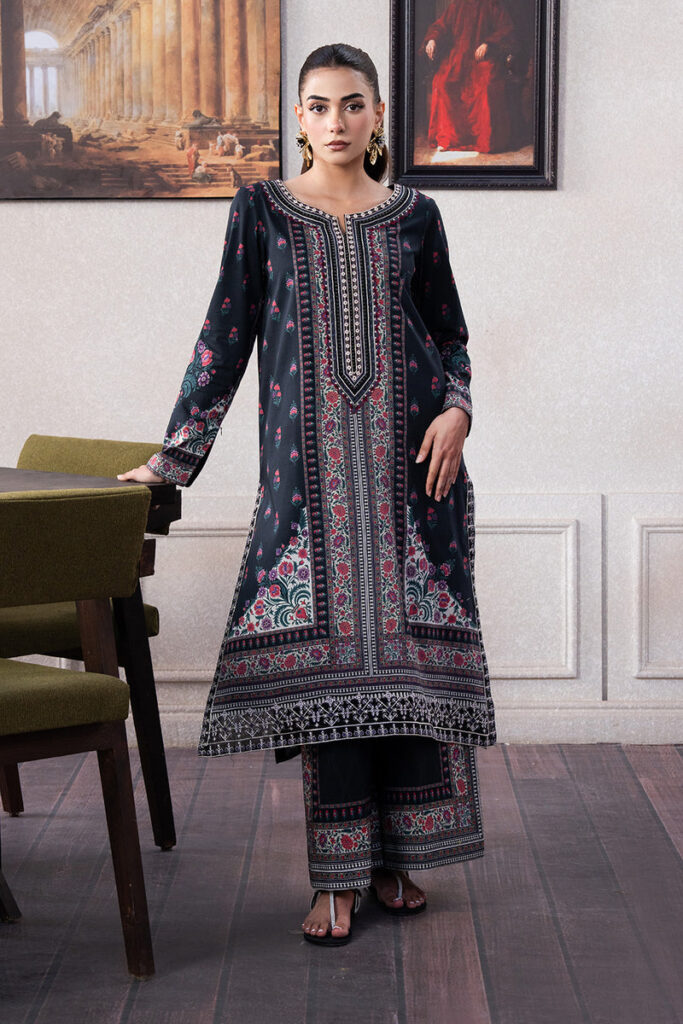Essentials Clothing: Navigating Premium Pricing and Elevated Profit Margins in a Sustainable Fashion Landscape
Essential Clothing, with its commitment to quality, durability, and ethical production, occupies a unique space in the apparel market. Unlike fast fashion brands that thrive on volume and low prices, Essential Clothing positions itself as a provider of enduring wardrobe staples. This approach, however, necessitates a premium pricing strategy, reflecting the higher costs associated with sourcing sustainable Essential Clothing materials, employing skilled artisans, and implementing transparent and ethical manufacturing practices. This essay will explore the rationale behind Essential Clothing’s premium pricing strategy, its impact on profit margins, and the multifaceted ways in which the brand can justify these higher prices to its discerning customer base while ensuring long-term profitability and a commitment to sustainable practices.
The Justification for Premium Pricing:
Premium pricing is not merely a decision to charge more; it’s a reflection of the true cost of producing high-quality, ethically-made, and environmentally responsible clothing. Several factors justify Essential Clothing’s premium pricing strategy:
- Superior Materials: Essential Clothing’s commitment to using premium, sustainable materials such as organic cotton, linen, recycled fibers, and other innovative fabrics contributes significantly to higher production costs. These materials often require specialized sourcing, rigorous testing, and certification, all of which increase expenses compared to the use of conventional, lower-cost fabrics.
- Ethical and Transparent Manufacturing: Essential Clothing prioritizes fair labor practices, safe working conditions, and transparency throughout its supply chain. This includes paying fair wages, providing benefits to garment workers, and ensuring that factories adhere to strict environmental standards. These ethical practices, while vital, often come with higher labor costs compared to those associated with less ethical manufacturing models.
- Craftsmanship and Durability: Essential Clothing invests in high-quality craftsmanship, employing skilled artisans who meticulously construct garments using durable techniques like reinforced seams, robust stitching, and attention to detail. This commitment to quality results in longer-lasting garments, but also entails higher labor costs and reduced production speeds compared to mass-produced, lower-quality garments.
- Design and Innovation: Investing in timeless, well-designed garments that transcend trends requires a dedicated design team, the use of high-quality patterns, and the ongoing development of new styles and silhouettes.
- Small Batch Production and Limited Inventory: Limiting production runs to minimize waste and reduce inventory costs can result in higher per-unit costs. The brand’s commitment to not overproducing, and to making only what is necessary can add to the cost of goods.
- Brand Value and Perception: Premium pricing helps to establish and reinforce the brand’s perception of quality, exclusivity, and sustainability. It communicates that Essential Clothing is not just selling clothing; it’s selling a commitment to values that resonate with environmentally and ethically conscious consumers.
Impact on Profit Margins:
A premium pricing strategy, when executed effectively, can significantly impact Essential Clothing’s profit margins. By selling fewer units at higher prices, the brand can potentially achieve higher gross profit per garment and greater overall profitability, even if production volume is lower than that of fast-fashion competitors.
- Higher Gross Profit per Unit: The increased price per garment, exceeding the cost of materials and production, translates into a higher gross profit margin. This provides the brand with a greater financial buffer to invest in research and development, ethical sourcing, marketing, and other essential business operations.
- Increased Profitability: Higher profit margins enable the brand to achieve overall profitability, even with lower production volume. This financial stability allows Essential Clothing to weather market fluctuations, invest in growth opportunities, and remain committed to its sustainable mission.
- Financial Flexibility: Premium pricing provides financial flexibility, allowing the brand to invest in long-term sustainability initiatives such as implementing circular economy models, reducing its carbon footprint, and supporting social causes.
- Opportunity for Reinvestment: Higher profit margins allow Essential Clothing to reinvest a greater portion of its earnings in areas critical to its success, such as:
- Product Development: Creating new designs, exploring innovative materials, and improving garment construction.
- Marketing and Brand Building: Building brand awareness, communicating its values, and reaching its target audience.
- Supply Chain Improvements: Improving transparency, building stronger relationships with suppliers, and reducing environmental impact.
- Customer Experience: Enhancing the customer experience through improved service, online platforms, and in-store experiences.
Communicating Value and Justifying the Price:
Premium pricing requires a clear and compelling communication strategy to justify the higher cost to the consumer. Essential Clothing needs to effectively communicate the value it offers:
- Transparency and Storytelling: Sharing the brand’s story, detailing its sourcing practices, manufacturing processes, and environmental impact builds trust and allows customers to connect with the values behind the price.
- Emphasis on Quality and Durability: Highlighting the superior materials, craftsmanship, and durability of its garments assures customers that they are investing in long-lasting pieces.
- Education on Sustainable Practices: Educating customers about the environmental and social benefits of sustainable fashion helps them understand the value of ethical sourcing and production.
- Focus on Timeless Design: Emphasizing the timeless designs, versatility, and longevity of its garments allows customers to see them as investments that transcend fleeting trends.
- Exceptional Customer Service: Providing excellent customer service, including personalized styling advice, easy returns, and responsive communication, enhances the overall customer experience and justifies the premium price.
- Highlighting the Cost Per Wear: Encouraging customers to consider the “cost per wear” can showcase the long-term value of durable garments. If a garment lasts for several years, the cost per use is lower than that of a cheaper, disposable item.
- Partnerships and Collaborations: Partnering with other brands or organizations that share its values can help Essential Clothing reach a wider audience and further reinforce its brand image.
Strategies to Optimize Profit Margins:
While premium pricing is essential, Essential Clothing can also employ various strategies to optimize profit margins and maintain competitiveness:
- Supply Chain Optimization: Negotiating favorable terms with suppliers, streamlining production processes, and reducing waste throughout the supply chain can help to reduce production costs.
- Efficient Inventory Management: Implementing efficient inventory management systems minimizes the risk of overstocking and reduces the need for markdowns.
- Direct-to-Consumer Sales: Utilizing a direct-to-consumer (DTC) sales model, through its own website and potentially through physical retail locations, allows Essential Clothing to bypass intermediaries and retain a larger portion of the profit margin.
- Strategic Marketing and Advertising: Investing in targeted marketing and advertising campaigns that effectively communicate the brand’s value proposition and reach its target audience can increase sales volume and reduce marketing costs per unit.
- Product Mix Strategy: Offering a diversified product mix that includes core essentials, seasonal collections, and potential collaborations can help to meet different customer needs and maximize revenue.
- Value-Added Services: Offering value-added services, such as alterations, repairs, and styling advice, provides added value to customers and can increase profitability.
- Subscription Models: Implementing subscription models for essential items, such as basic t-shirts or socks, can provide a recurring revenue stream and enhance customer loyalty.
- Bundling and Promotions: Creating curated bundles of essential garments or running limited-time promotions can encourage customers to purchase more items and increase average order value.
The Long-Term Vision: A Sustainable and Profitable Future
Essential Clothing’s commitment to premium pricing is not simply a business strategy; it’s an integral part of its vision for a sustainable and ethical fashion industry. By justifying higher prices with superior quality, ethical practices, and transparent communication, the brand can create a virtuous cycle:
* Customer Loyalty: Attract and retain discerning customers.
* Brand Reputation: Position the brand as a leader in sustainable fashion.
* Financial Strength: Achieve financial stability, enabling the brand to invest in long-term sustainability initiatives and innovative projects.
* Industry Influence: Inspire other brands to adopt more ethical and sustainable practices.
Essential Clothing’s success relies on a premium pricing Essentials Hoodie strategy that is supported by the brand’s values and commitments. This requires a holistic approach, encompassing meticulous material selection, responsible manufacturing, effective communication, efficient operations, and exceptional customer service. In doing so, the brand can secure higher profit margins while contributing to a more sustainable fashion future, demonstrating that it is possible to build a successful business while adhering to the highest ethical and environmental standards. This approach will allow Essential Clothing to create high-quality products, and maintain its commitment to creating a more environmentally friendly and people friendly business.









